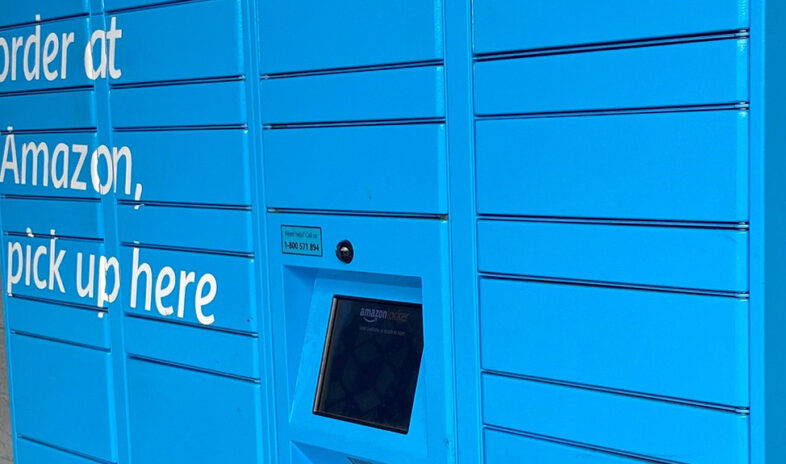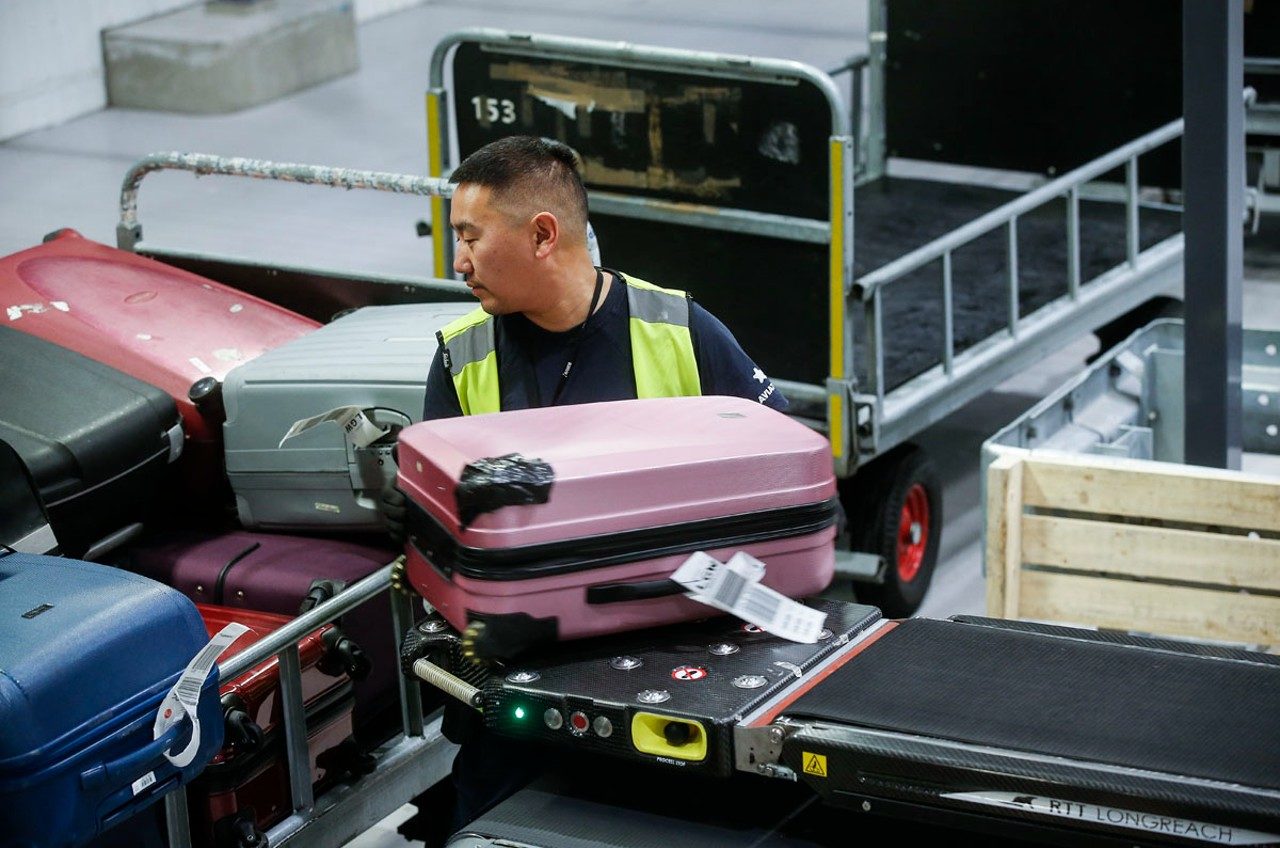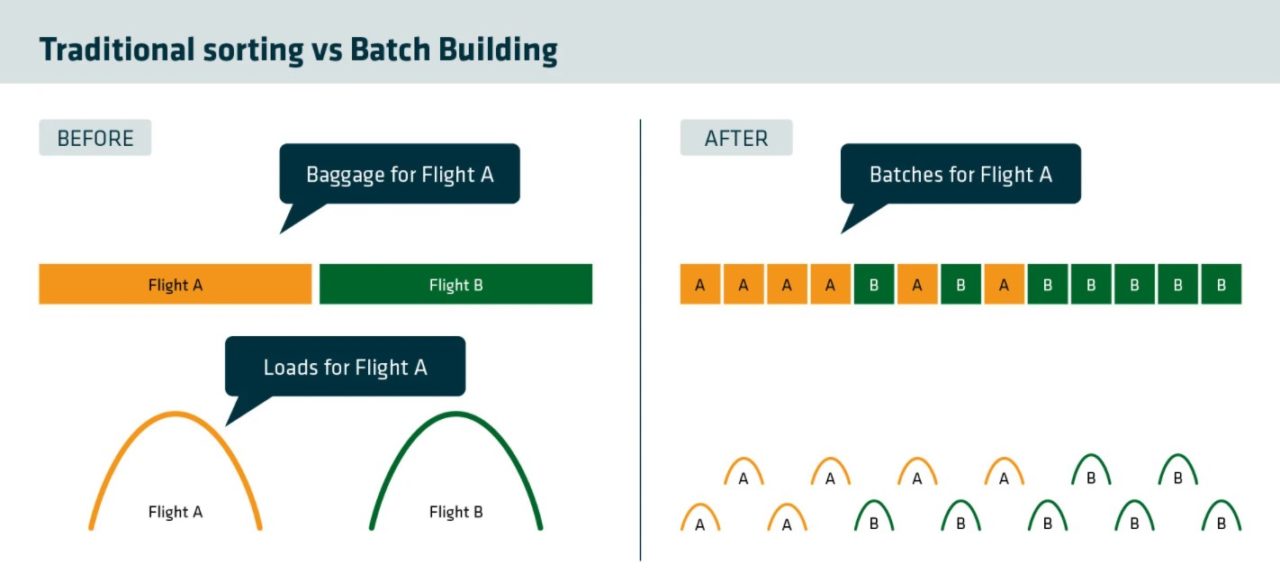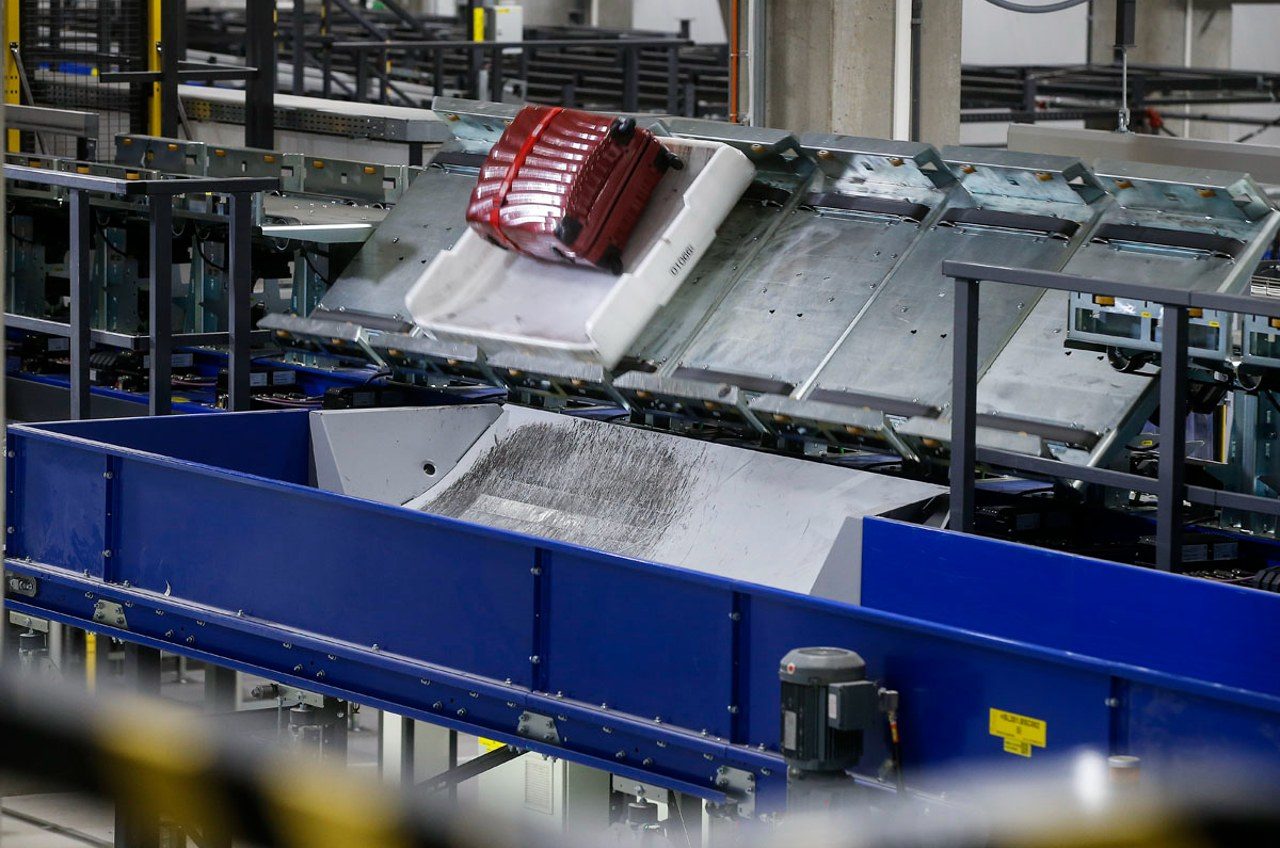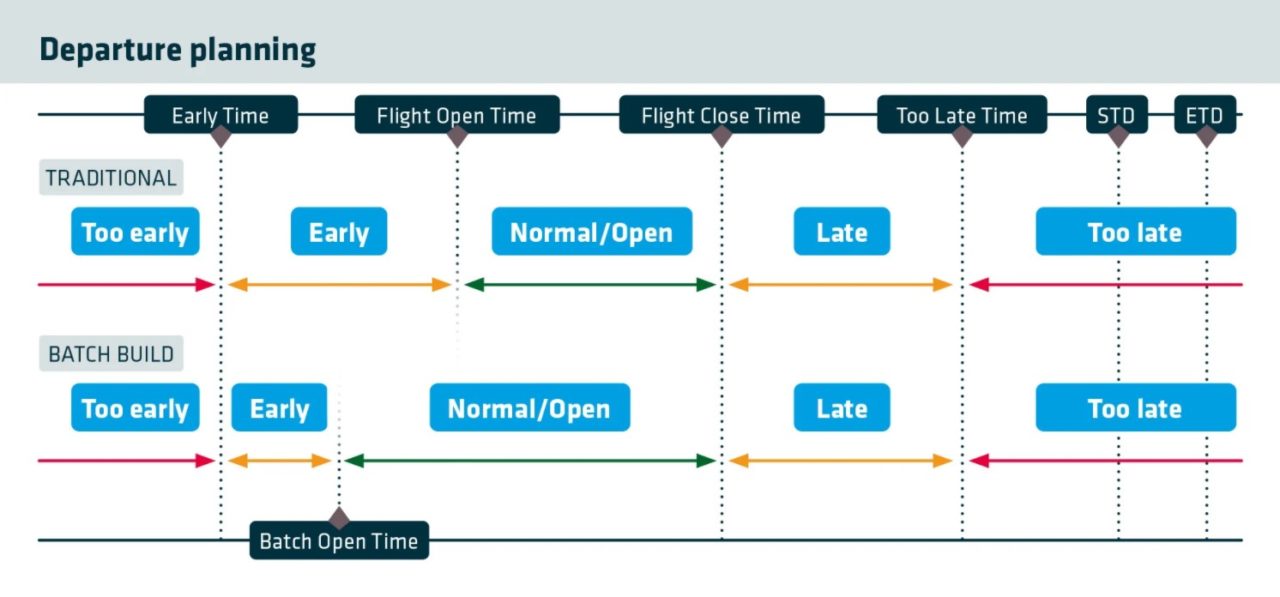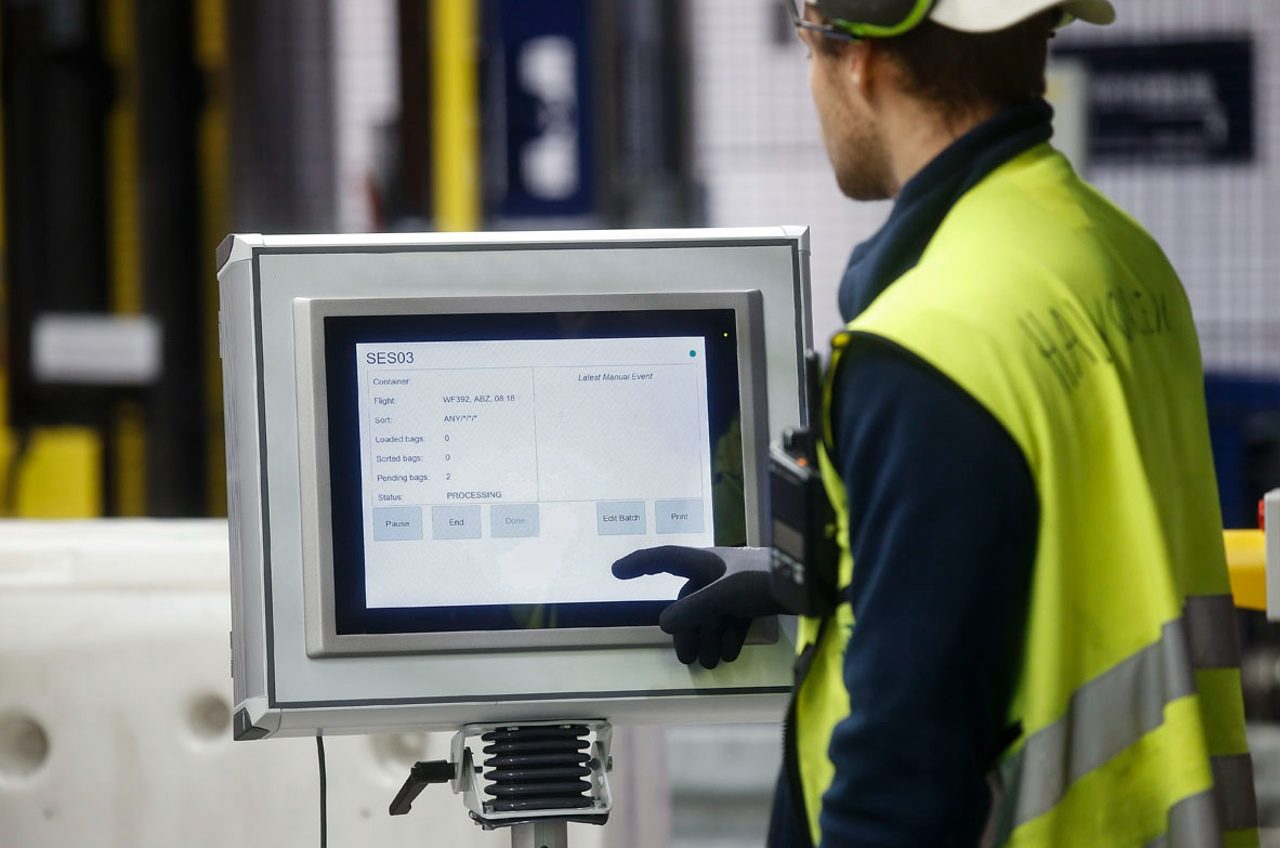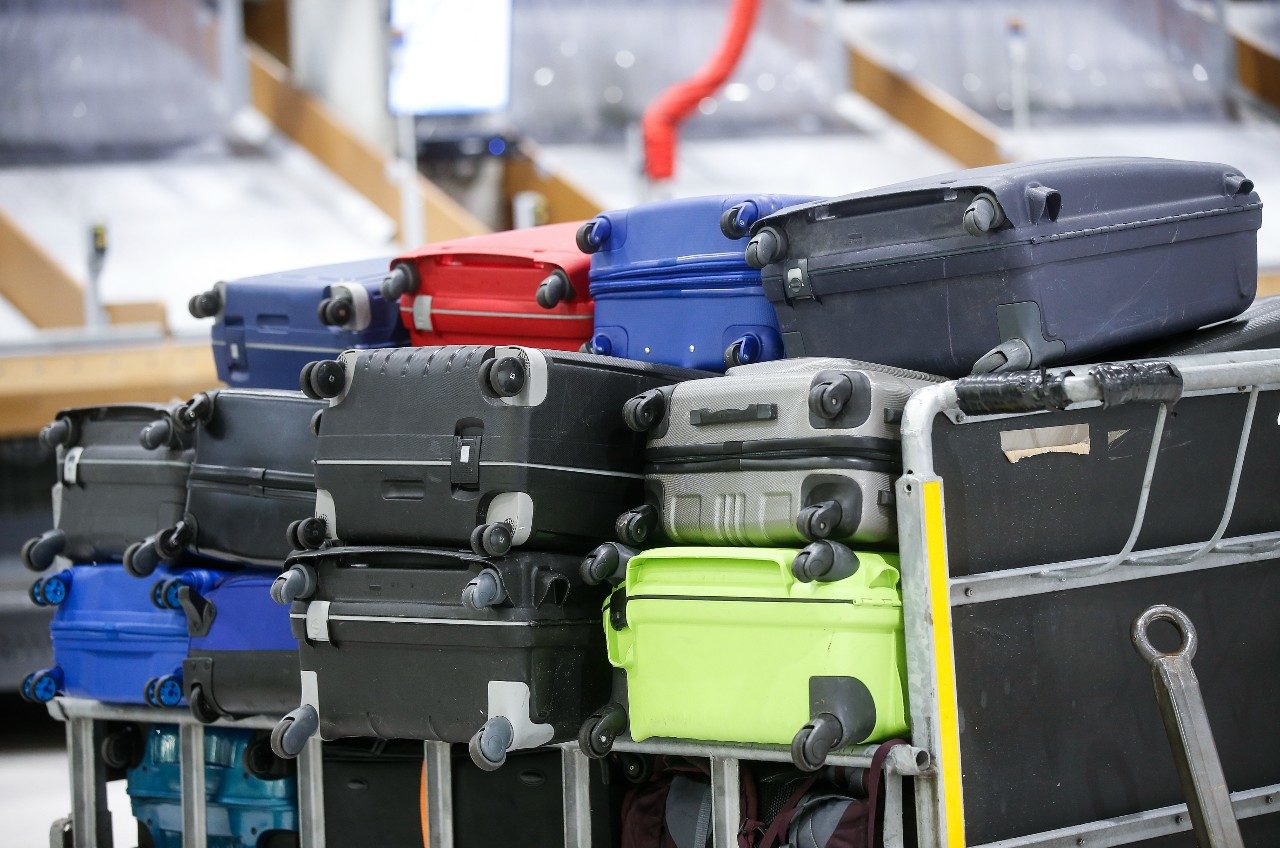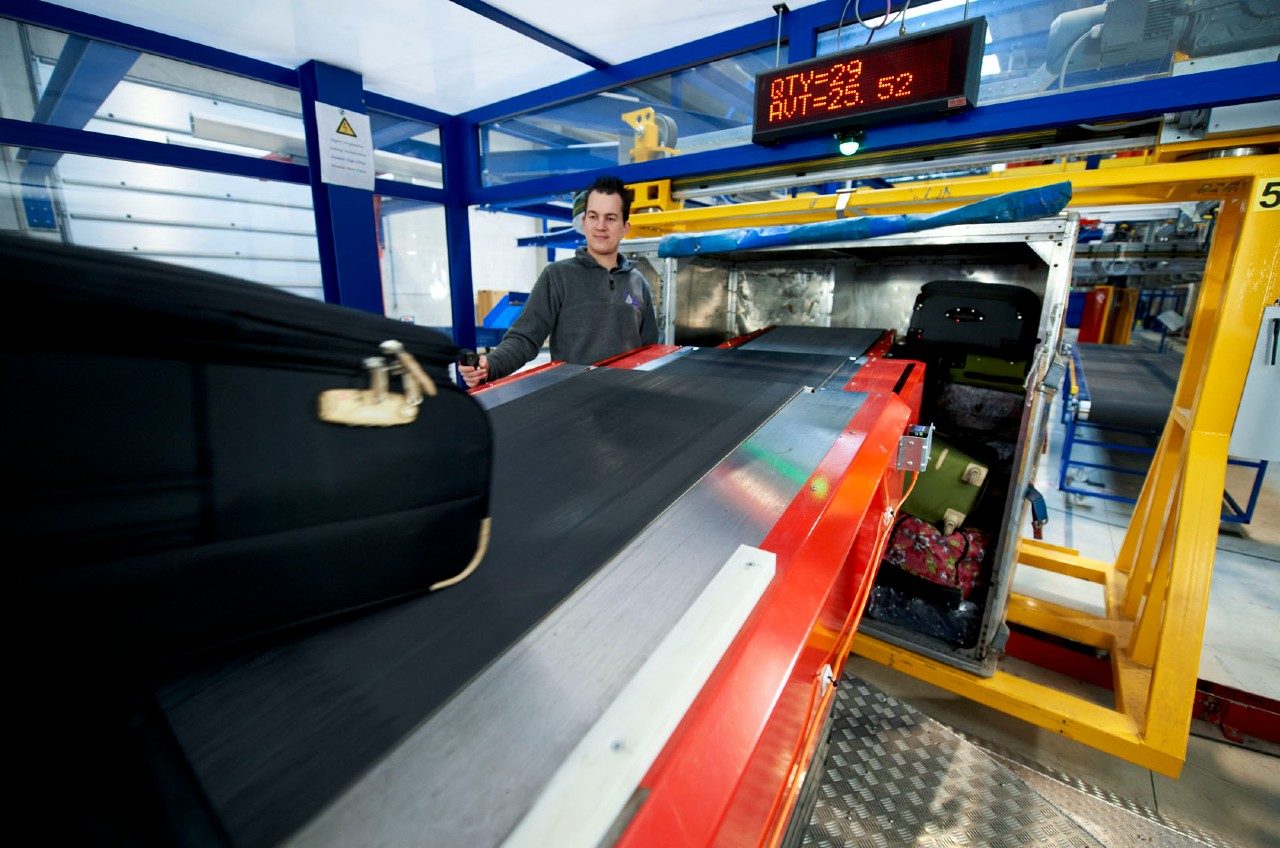How to implement the batch building concept
So how do airports start to implement the batch building concept? Well, those airports that are already using an EBS system are well placed to begin to implement batch building. Operators can begin to build batches in these repurposed storage areas.
No two airports are the same
But every airport will be different. So, it’s a matter of analysing an individual airport’s operations and finding a solution that works best for it. This will mean analysing its existing makeup areas and looking at investigating how it can be reconfigured. It could be as simple as replacing some makeup carousels with dedicated lines, for example, where it can locally start building batches. Some physical hardware will need to be installed, such as adding more conveyor lanes or an additional divert, but it won’t require a new sorting system. Or it could just be some software needs to be changed.
Brownfield sites and greenfield sites
For airports implementing batch building in greenfield sites, the savings on floor space can be very significant. For brownfield sites, it will be difficult to make these savings as the space is already fixed. But for these airports, implementing the batch building concept will notably increase baggage handling capacity and operational efficiency.
Start in one area first
It is recommended that airports implement batch building in just one area first, such as a corner of one terminal, while all other areas operate normally. By starting in one sector, the airport can gain knowledge about the new way of operating and, working together with BEUMER Group, can develop the rest of the airport based on the experience gained in the test area.
With airports currently operating at less capacity on account of COVID-19, there’s no better time to start implementing the batch building concept.


